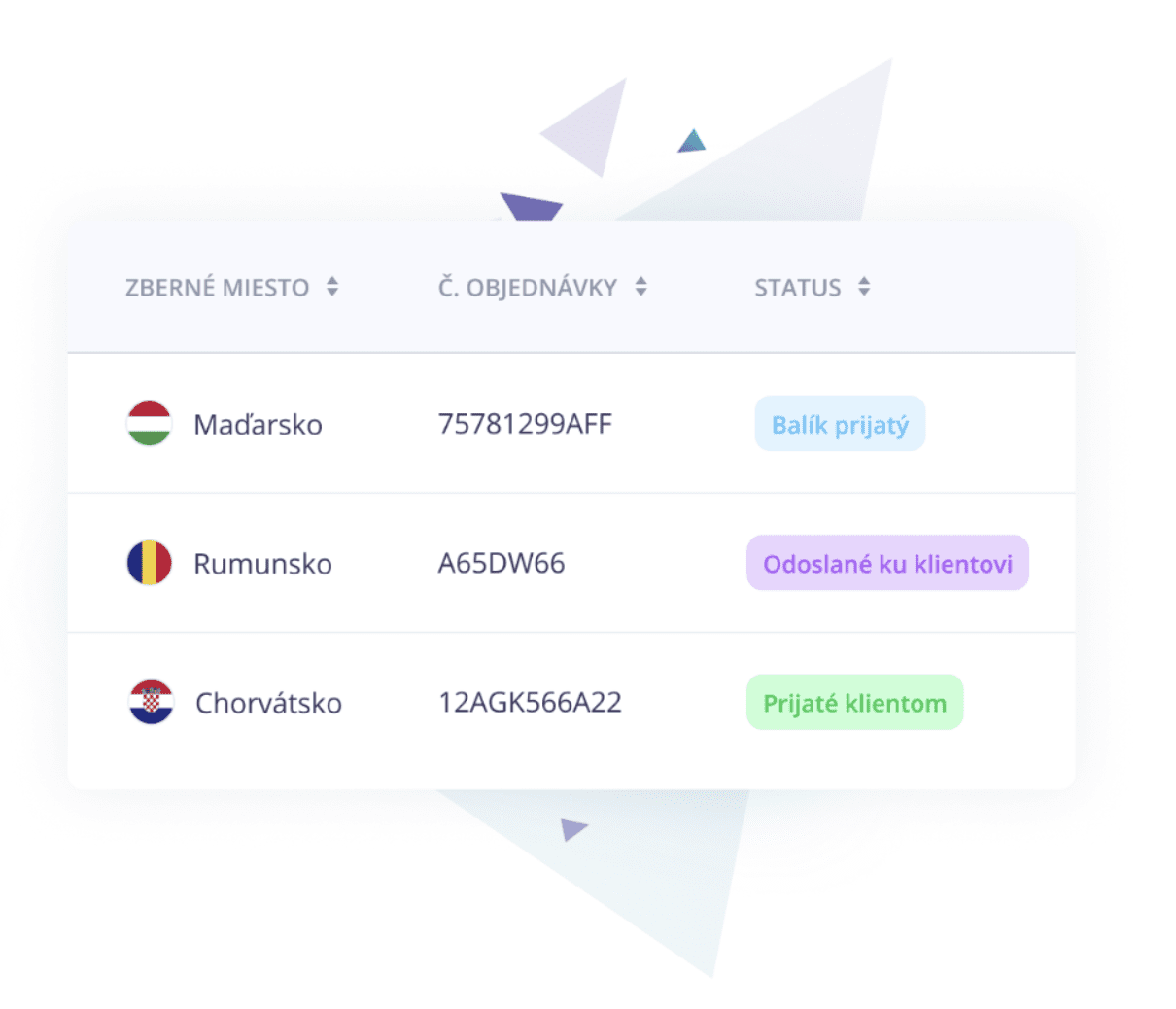What is reverse logistics?
Reverse logistics is the process of returning a customer’s unwanted goods back to the online store. In essence, it begins where logistics should have ended – with the end consumer.
If you’re involved in business, you know that frequent returns are not an isolated phenomenon. According to multiple surveys, up to 30% of goods bought through online stores end up being returned. Globally, a billion dollars worth of goods are returned by customers every year.
You need a simple returns process
An online store that sells goods abroad but does not have a physical presence in that market in the form of a warehouse, store or office will find this process particularly challenging as it enters into competition with domestic online stores, which are at an advantage.
A local customer will prefer to buy from a local online store, even if it means purchasing at a higher price if the retailer offers easy returns. An expanding online store can match this only if it simplifies reverse logistics and provides the same (or better) returns and refunds system.
Types of reverse logistics
There are different types of reverse logistics, each representing a specific stage of the return of goods.
Most online stores need to solve 4 basic problems:
- What should they do with the returned goods?
- What should they do with the packaging material?
- What should they do with unsold and unused goods?
- What should they do with goods that need to be repaired or refurbished?
Returns management
When it comes to returns, reverse logistics addresses particularly the speed of the return and the re-introduction of goods into the resale chain.
- The goods due to be returned are either sent by the customer at their own expense or, alternatively, the online store may will allow the goods to be returned to a drop-off point, brick-and-mortar store or via courier.
- Someone must accept the returns request and inspect the returned goods.
- Ideally, if the online store has a physical presence, it can exchange the returned goods for another item there and then.
- Don’t just focus on the returns process but also on keeping the number of returns to a minimum.
- Try to get information about the reason for the return as early as possible, ideally before the goods arrive at your warehouse. You can then categorise the return more quickly according to whether the goods can be re-sold or whether they are going for refurbishment or recycling.
Management of the purchase process and re-using packaging materials
In the food or cosmetics industry, the issue of reusability of packaging materials is increasingly on the rise.
Take inspiration from beverage retailers that re-use dispensing containers or Fortelock, which offers flooring made from recyclable materials.
Fortelock has managed to increase the amount of recycled plastic by more than half year-on-year (2021 vs 2022), reaching a record figure of more than 3 million kilograms of plastic waste.
If you ensure that the packaging material is environmentally friendly and gets returned back to you, you can save a lot of energy and money. Cosmetics manufacturer Mylo has taken a similar approach. Customers can return glass containers from used cosmetics at selected partner stores or send them by post and receive a 50 cent discount per returned bottle on their next purchase.

How to deal with unsold goods
Overstocking is another problem that every growing e-commerce store has to deal with. Obsolete or older models of some goods can be donated to charity, or you can use them to make something brand new that will again bring value to your business.
Refurbishment and upcycling also belong to reverse logistics
As part of reverse logistics, a responsible retailer should also address the recycling of worn and damaged products.
Take inspiration from IKEA or CURAPROX, for example. This furniture retailer encourages customers to return worn-out furniture, which it then uses to make other products.
The manufacturer of CURAPROX toothbrushes operates in a similar way. It collects used toothbrushes from customers and then uses them to make waste sorting bins for schools.

Use local collection points and addresses
To ensure reliable and functional reverse logistics for the return of goods, we recommend that online stores use local collection points and addresses.
It is an efficient alternative that saves time and money in the long run:
- Collection points speed up the whole refund and case assessment process.
- The existing infrastructure also addresses staff substitutability without the need for further investment.
- The reverse logistics management system takes place in real time via the Expandeco platform.
- In addition, an address in the country you operate in gives you the possibility to adapt the required capacity, for example, in line with seasonal requirements.
How does the return of goods through a collection point work?
Expandeco will normally process the goods returned to a collection point within 24 hours. The package is registered and, if requested, photographed. Data is entered into a simple system that allows the online store owner to keep track of all returns at all times.
It then combines the packages into a single shipment and sends them by a pre-arranged logistics service directly to the online store. In this way, the online store can significantly speed up the processing of foreign customers’ requests, such as refunding money or sending a different sized item.
“A local address will provide you with increased trust from overseas customers, increase conversion, reduce your reverse logistics costs in the long term and speed up the claims and returns process,” Tomáš Vrtík, (Expandeco)

Save 6 days on returns
If you are interested in this issue, we recommend you read the case study of the fashion brand Bibloo. Thanks to multiple collection points in several countries, the resolution of their cases has been accelerated by 6 days. Returns rates have remained steadily below 15%, with refunds and claims being processed within 24 hours.
Advantages of local collection points:
- cost optimisation,
- direct impact on conversions,
- speeding up the claims and refund process,
- freeing up customer service capacity,
- there is no need to acquire own staff and to address their substitutability,
- increasing the credibility of the online store,
- a competitive advantage in building a positive customer experience,
- service at a high level, generating positive reviews,
- a single, clear system within which online stores enter translations, handle customer support and manage returns.
Why should an online store pay attention to reverse logistics?
Reduce costs and improve cash flow
With the right processes, you can save money on transport and packaging materials and, with a little creativity, even make use of waste.
You will get more satisfied and loyal customers
The confidence of easy and fast returns motivates customers to buy again. And in e-commerce, the most valuable customer is the one that comes back. Conversely, a bad returns experience is guaranteed to quash any hopes of another purchase, and the money you put into advertising to acquire a new customer ends up being wasted.
You build your brand’s reputation
By being environmentally friendly and fair, you build long-term relationships not only with your customers but also with your suppliers. When properly managed, reverse logistics can help you earn one of the recognised certifications for companies with a responsible approach to the planet.
How to make money, save energy and recycle?
Define a clear returns policy and communicate it openly to customers. Ensure that returns are quick and easy. You can do this by adding a return form to the parcel itself and not expecting the customer to go online and print it out.
Use data to find out why customers are returning goods. It is easy to determine if packages arrive damaged due to the carrier or if the product matches customer expectations. Sometimes you just need to add information to the product description within the online store, and the number of returns will drop significantly.
Think about how you can recycle and reuse the returned goods.
Expand with real data
Are you planning to expand abroad but not sure if you can manage it? Are you worried about overspending on unnecessary things, or on the contrary, are you stressing about what not to overlook?
When we open our clients to new countries, we work with real data directly from Google. In addition to current demand, we also hold data on competitors and customers in the selected country segment.
If you need help, please get in touch and we will be happy to help.






